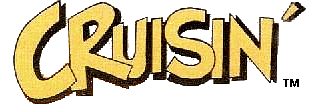

|
The Making of CRUISIN' Revealed!!!
A few weeks ago, I received an email from a Cruisin' fan from England. Here's what he wrote:
Well, in all matters technical regarding the CRUISIN' series, I turn to our "technical advisor": the one, the ONLY, Bill "Cap'n Billy" Hergonson, whose name you'll recognize from some of the credits on the CRUISIN' liner notes. And I must admit, I've often wondered this myself. What's the scoop, Bill?
Lee,
I did Cruisin' 1955, 1963-64,65,66, & 67. It was 1970-72 for those, where they were recorded in the same studio as American Top 40. But I can answer the question in GENERAL.
The toughest part of Cruisin' series was getting the old COMMERCIALS and JINGLES. ALL of the Cruisin' albums are recreations...however, there are some portions that are actual airchecks. I can only speak for the ones I recorded, but on Cruisin' 1965, Robert W. Morgan, KHJ, which I recorded* (and we considered the best of the series, because it was the original DJ, PD and 15ips TAPE MASTERS of the Johnny Mann a'cappella "Boss" jingles), there is a portion near the end that features "The Real Don Steele" calling in regarding the "Boss Mustang" and THAT is a snip of real, 1965 aircheck.
One other thing...we usually DID listen to old airchecks of these guys to really, truly "get it right." Especially true of 1963, B. Mitchell Reed, WMCA, NY. Most of the raps were transcribed word-for-word from an old "Good Guys" aircheck. Again, we used some actual clips on the record (The "Good Guys" singing "East Side/West Side/All Around The Town..."). The names of the listeners were real, contest winners, etc. No wonder people THOUGHT they were airchecks (our greatest compliment) but THE DEAD GIVEAWAY...too FEW
commercials!! I'm sure if any of those people, who were kids at the time, bought the record, they were jolted out of their shoes. My PERSONAL favorite...1967, Dr. Don Rose, WQXI, Atlanta. We futzed around with THAT recording for days and days, and actually took it to Studio West in Kearny Mesa and ran it through their concrete echo chamber to get the echo as "wet" as the old Top 40 stations. I met "Dr. Don" some time later at a convention. I didn't record his voice tracks, so I hadn't met him before. He LOVED the
finished album...his only comment, "I was never that tight on the board myself...you made me sound great!"
All the albums were pre-planned by Jacobs based on the music he had license to, the jingles he could get, paying this weirdo in Ohio a small fortune for old commercials, the great "cartoon series" cover art...it was a HELL of a lot of work and very well done by Jacobs. After the playlist was set, he'd line up the other elements and then we'd voice track the DJ. The albums were assembled on a two-track Sculley mastering machine at 15ips per side. I consider the CRUISIN' series to be Jacob's true legacy to the business. I was glad to be a spear carrier in the opera and have a hand in radio history. Plus, if you've ever heard rumors, Jacobs could be a VERY interesting guy to work for. "One Take City" for the engineer, my friend!
(Then try working for him as a morning DJ!!) But when all is said and done, these albums are absolutely as accurate as we could make them at the time.
*The Morgan album was mostly recorded in the production room of KGB AM/FM, San Diego. Dr. Don Rose was recorded in San Francisco, LA and San Diego.
Yours Truly,
Bill 'Cap'n Billy" Hergonson
Thanks, Bill.
|